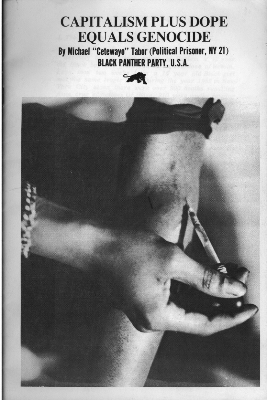History
A Divided Union
Growth of Black Power
Many people began to become frustrated by what they saw as slow progress towards equal civil rights. Followers of black power groups felt King’s peaceful protests were wrong and that violence is sometimes necessary to achieve their aims.
The Nation of Islam (otherwise known as the Black Muslims)
This group argued that gaining equality in a white society was impossible
because white people are basically racist and would never change. It was
led by Elijah Muhammad, but its most famous spokesman was Malcolm X. Muhammad
Ali was also a leading member. The Nation of Islam wanted a separate black
state in the USA without interference from the whites. Black people were
encouraged to set-up their own businesses so that they didn’t have
to rely on the whites. Their long-term aim was to go back to Africa. They
believed working with whites would slow down progress so rejected the
civil rights movement. At its peak had 50 000 members.
Malcolm X later changed his mind about civil rights, which lead to a split.
He was later murdered. When Elijah Muhammad died in 1975 his son lead
a further split by accepting white Muslims.
SNCC (Student non-violent co-ordinating committee)
Was at first set-up to protest for black civil rights and had thousands
of black and white members. However, a new leader Stockely Carmichael
expelled white members claiming white people had no part to play in the
fight for black civil rights. He said black people should be proud of
their colour and roots and urged black people to set-up their own businesses.
SNCC faded after he left in 1968.
Black Panthers
The most violent of the black power groups, it was set -up by Huey Newton
and Bobby Seale. The panthers never had more that 5000 people but attracted
large media attention because of their use of violence. They organised
armed patrols in black areas to protect people from what they called ‘police
terrorism’ they were also against capitalism. Clashes followed and
in 1969, 700 Panthers were arrested including Newton, this limited their
influence.

A black Panthers campaign poster
Reference Tools
Dictionary
Thesaurus
Maps
Scientific Calculator
Periodic Table
Translator
Unit Conversion
Divided Union
Introduction
Post War
The ‘Red Scare’
Civil Rights Movement
Non-Violent Direct Action
John F Kennedy
Lyndon Johnson
Growth of Black Power
The Woman’s Movement
The Student Movement
Nixon and Watergate
Cold War
Period 1945 - 1962
Period 1956 - 1962
Period 1962-1969
Period 1969 -1979
Period 1979 - 1985
Period 1985- 1991
